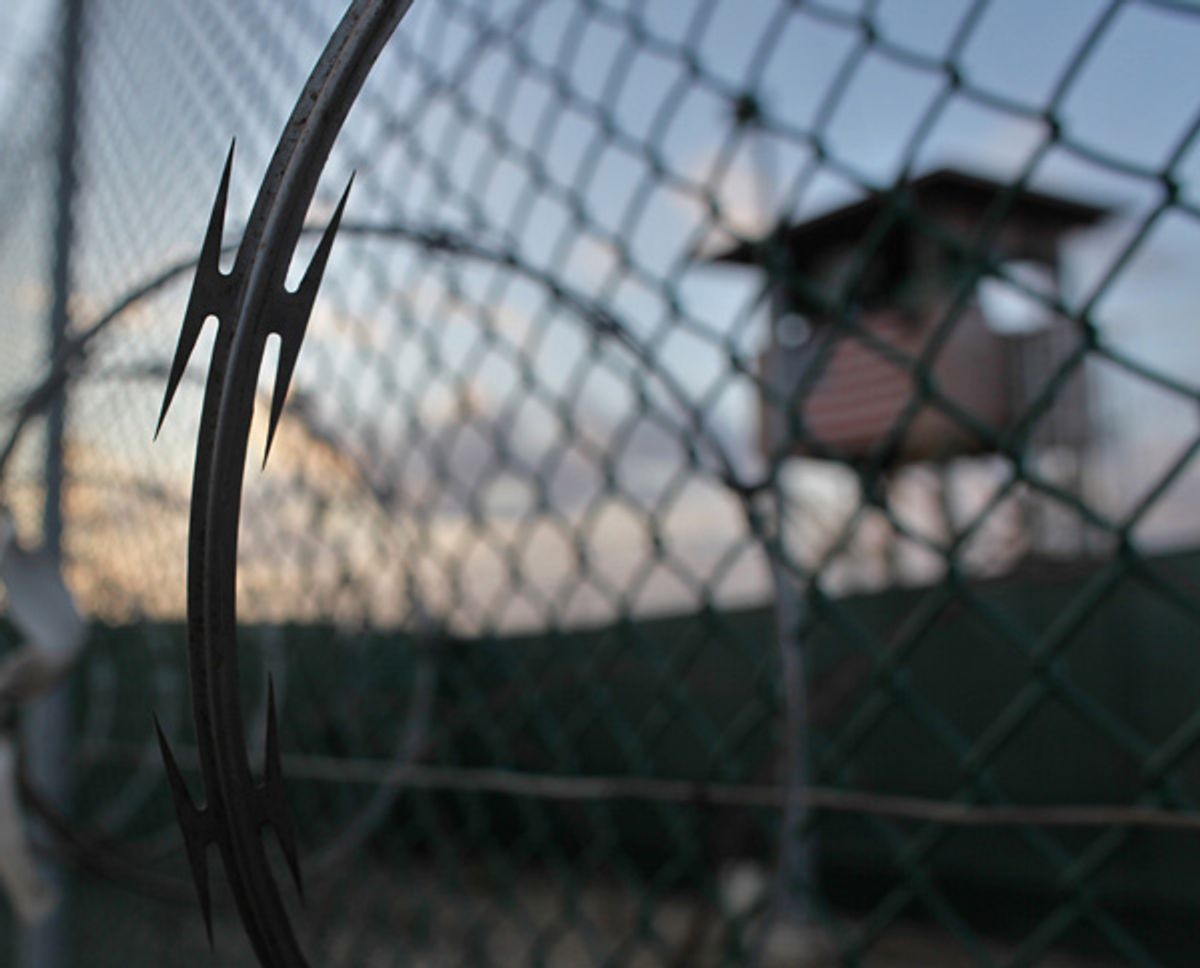 Among the news that ended up being buried in the events last week: A nonpartisan think tank, the Constitution Project, released a scathing, 577-page report on the U.S.’s treatment, and torture, of detainees in the aftermath of 9/11. The investigation began in 2009, after Obama opposed creating a “truth commission.”
Among the news that ended up being buried in the events last week: A nonpartisan think tank, the Constitution Project, released a scathing, 577-page report on the U.S.’s treatment, and torture, of detainees in the aftermath of 9/11. The investigation began in 2009, after Obama opposed creating a “truth commission.”
With a Senate investigation of detainee treatment still classified, the report from the bipartisan task force is the most comprehensive public review to date. The 11-member panel interviewed more than 100 former military officials, detainees and policymakers.
Among their findings: There is no compelling security reason to keep classified details about the CIA’s now-shuttered black prisons. The task force hopes their report will spur more government transparency on the treatment of detainees, starting with the release of the Senate investigation.
Here’s a rundown of previous claims skewered by the report:
Claim No. 1: The U.S. didn’t use torture.
“Perhaps the most important or notable finding of this panel is that it is indisputable that the United States engaged in the practice of torture,” the report concludes. The task force says that despite overwhelming evidence of torture, both government officials and many in the media have continued to present the issue as a two-sided debate.
The task force measured confirmed reports on detainee treatment against several international and domestic legal definitions of torture. The U.S.’s tactics unequivocally amount to torture, they found, under definitions the U.S. itself has used to accuse other countries of the same crime.
Former UN ambassador John Bolton rejected the task force’s findings, telling the Associated Press the report is “completely divorced from reality.” Bolton said a team of lawyers scrutinized the policies to ensure interrogation never crossed the line.
Claim No. 2: When torture happened, it was because of a few low-level “bad apples.”
The report details how the decisions to use “enhanced interrogation” techniques were not rogue entry-level soldiers, but rather came from decisions made at the top of the administration. As a former Marine general told the task force, "Any degree of 'flexibility' about torture at the top drops down the chain of command like a stone —the rare exception fast becoming the rule."
Claim No. 3: Only three terror suspects were waterboarded by the CIA.
The task force’s findings support and elaborate on a Human Rights Watch report, which detailed how the CIA tortured at least two Libyans with water and abused several others to “win favor with el-Gaddafi's regime,” the task force found.
The testimonies of the two Libyans undermine the Bush administration’s repeated claims that the CIA only waterboarded against three people.
Claim No. 4: Torture definitely worked.
Former Vice President Dick Cheney and others have claimed that abusive treatment saved “thousands of American lives.” But the report found no evidence that torture itself was actually useful. As Obama's former National Director of Intelligence Admiral Dennis Blair wrote, as quoted in the report, "There is no way of knowing whether the same information could have been obtained through other means."
The movie Zero Dark Thirty, which gets a shout out in the report, has fueled the debate about whether torture ultimately helped the U.S. find Osama bin Laden. Officials have pointed to the tips provided by one detainee, Hassan Ghul, who was beaten and deprived of sleep while held in a secret CIA prison.
But the report is skeptical of the connection. As the report notes, Senator Dianne Feinstein and other officials said key information Ghul provided was “acquired before the CIA used their enhanced interrogation techniques against the detainee.”
Claim No. 5: A third of released Gitmo detainees have returned to terrorism.
Many lawmakers have used the supposedly high rate of detainee recidivism to justify keeping detainees at Gitmo. The government has claimed that nearly a third of released detainees returned to terrorism. But the report noted that Gitmo prisoner shouldn’t be counted as “returning to the battlefield” if they were never there in the first place. A former Guantanamo commander told the panel that up to half of detainees “were mistakes.”
Government stats also include both confirmed and suspected reports of “re-engagement.” Nor, the report notes, does the government have “firm guidelines” on what counts as a return to terrorism.
Claim No. 6: It’s all behind us.
“We need to look forward as opposed to looking backwards,” Obama said in 2009. But the report details how the ongoing lack of transparency and oversight leaves the door open for abuse. The CIA’s prisons have been closed, but the report notes that the current Army Field Manual on Interrogation contains amendments made in 2006 allow for sleep deprivation, separation and stress positions to be used in interrogation.
The bipartisan task force also concluded that current treatment of prisoners at Guantanamo, such as force-feeding hunger striking inmates and keeping them in indefinite detention, could qualify as torture under international law. The committee couldn’t come to a consensus on whether the prison at Guantanamo should be closed.

Shares